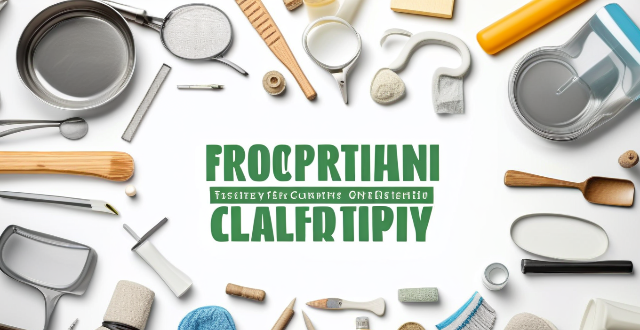The provided text offers a comprehensive guide on properly cleaning and sanitizing second-hand items to ensure their safety for use. The steps are divided into general cleaning procedures, specific instructions for different types of items like clothing, footwear, furniture, kitchenware, toys, and electronics, and additional tips on sanitization. The process involves inspection, initial cleaning, disassembly (if needed), soaking for smaller items, and using appropriate cleaning methods for various items. Sanitizing tips emphasize the wise use of disinfectants, ensuring ventilation, protecting oneself from harsh chemicals, and drying items thoroughly to prevent mold growth. This detailed guide ensures that second-hand items are not only reused but also recycled safely.

How to Properly Clean and Sanitize Second-Hand Items Before Using Them
When it comes to incorporating second-hand items into your home or daily routine, it's crucial to ensure that they are properly cleaned and sanitized before use. This process helps in removing dirt, germs, and potential allergens, making the items safe for you and your family. Here is a detailed guide on how to clean and sanitize different types of second-hand items:
General Cleaning Steps
1. Inspection
- Carefully examine the item for any signs of damage, mold, or pests.
2. Initial Cleaning
- Remove dust and dirt by wiping down the item with a damp cloth or using a vacuum cleaner for fabric items.
3. Disassembly (if applicable)
- Take apart items like appliances or toys to access hard-to-reach areas.
4. Soaking (for smaller items)
- Soak items like kitchen utensils or small toys in warm, soapy water to loosen grime.
Specific Item Cleaning
Clothing
- Wash in hot water with laundry detergent and bleach (if the fabric allows).
- Dry on high heat to sanitize.
Footwear
- Wipe the outside with disinfectant wipes.
- Stuff shoes with newspaper and spray the inside with a disinfectant spray.
- Air out for several hours or overnight.
Furniture
- Vacuum crevices and surfaces to remove dust and debris.
- Use an all-purpose cleaner to wipe down hard surfaces.
- For fabric upholstery, consider professional steam cleaning.
Kitchenware
- Wash dishes and utensils with hot, soapy water.
- Use a diluted bleach solution for sanitization.
- Rinse thoroughly and air dry.
Toys
- Plastic toys can be washed in the dishwasher or by hand with soap and hot water.
- Soft toys should be washed in the washing machine with hot water and dried on high heat.
Electronics
- Wipe screens and keyboards with a microfiber cloth and an appropriate electronics cleaner.
- Use cotton swabs dipped in isopropyl alcohol to clean hard-to-reach areas.
Sanitizing Tips
1. Use Disinfectants Wisely
- Choose disinfectants that are effective against a broad spectrum of pathogens.
- Follow the product instructions for proper usage and dwell time.
2. Ventilation
- Ensure good ventilation when using strong cleaning agents to avoid respiratory issues.
3. Protection
- Wear gloves and masks while handling harsh chemicals.
- Keep cleaning products away from children and pets.
4. Dry Thoroughly
- Make sure items are completely dry before storing them to prevent mold growth.
By following these steps, you can significantly reduce the risk associated with using second-hand items and enjoy the benefits of reusing and recycling. Remember, maintaining cleanliness is not just about appearance but also about health and safety.